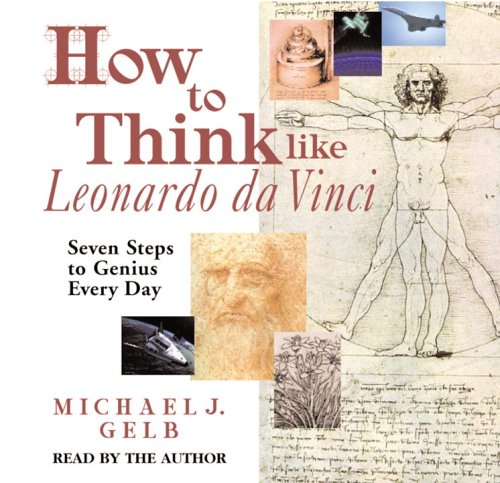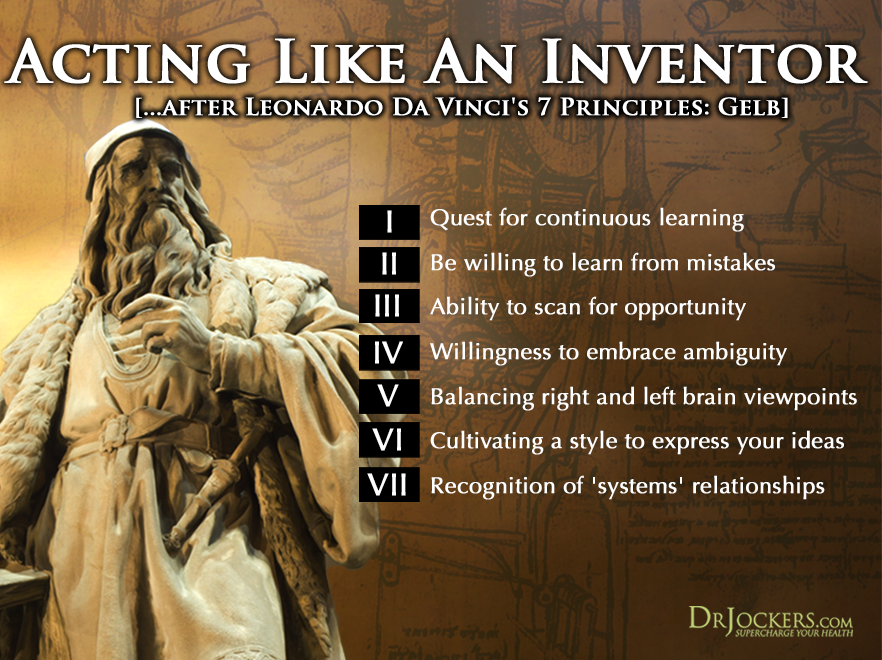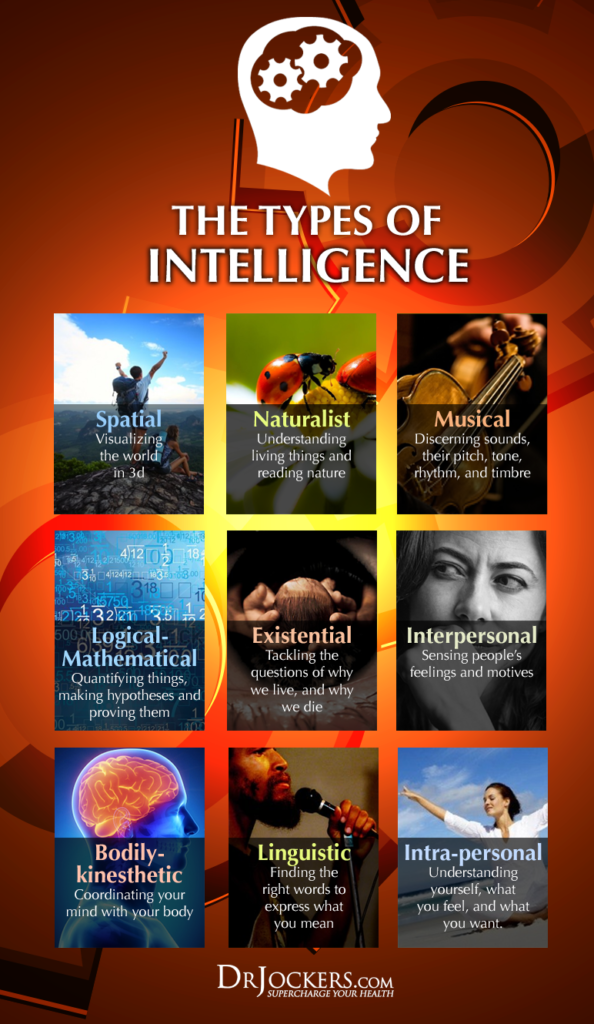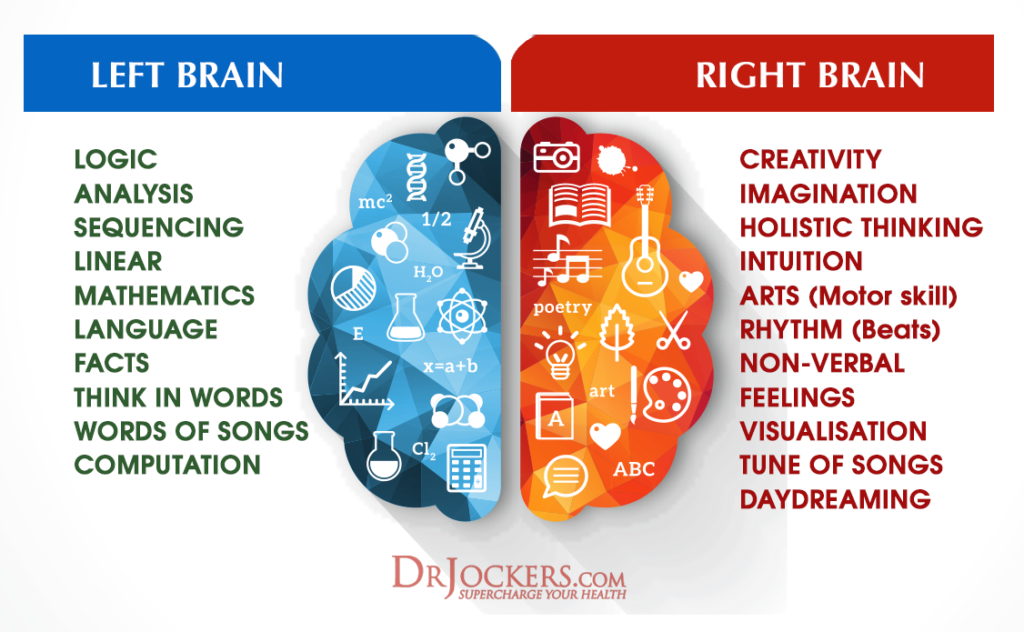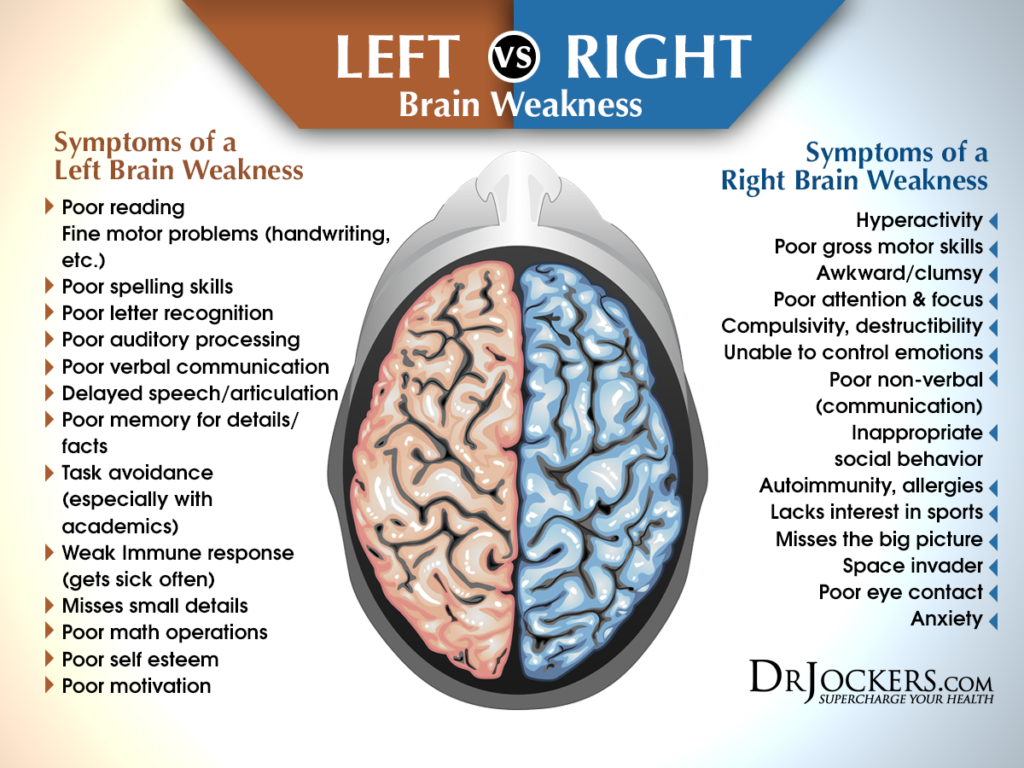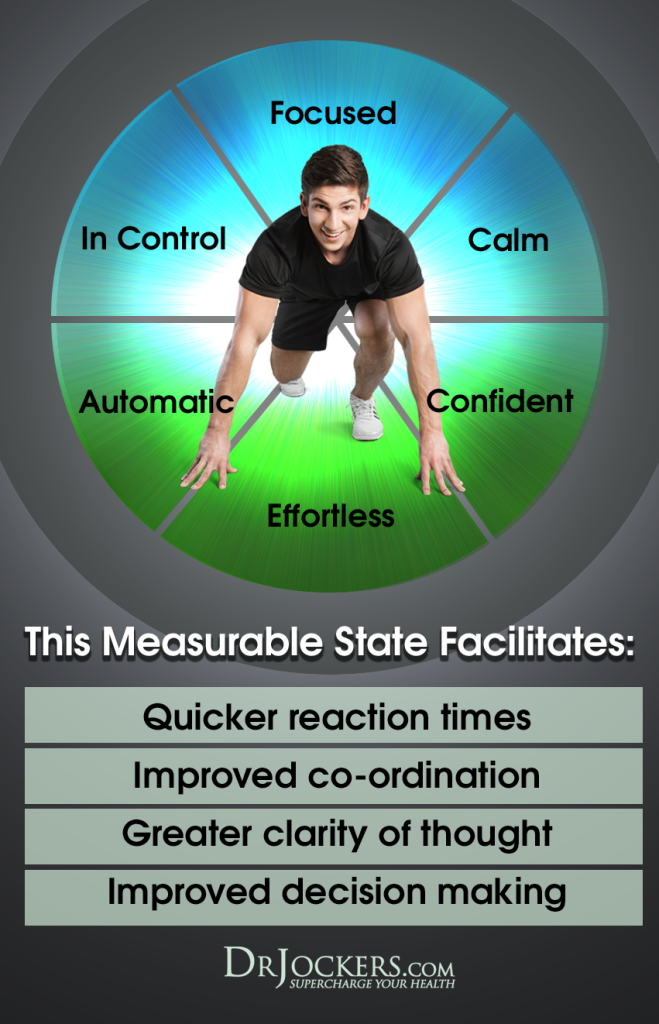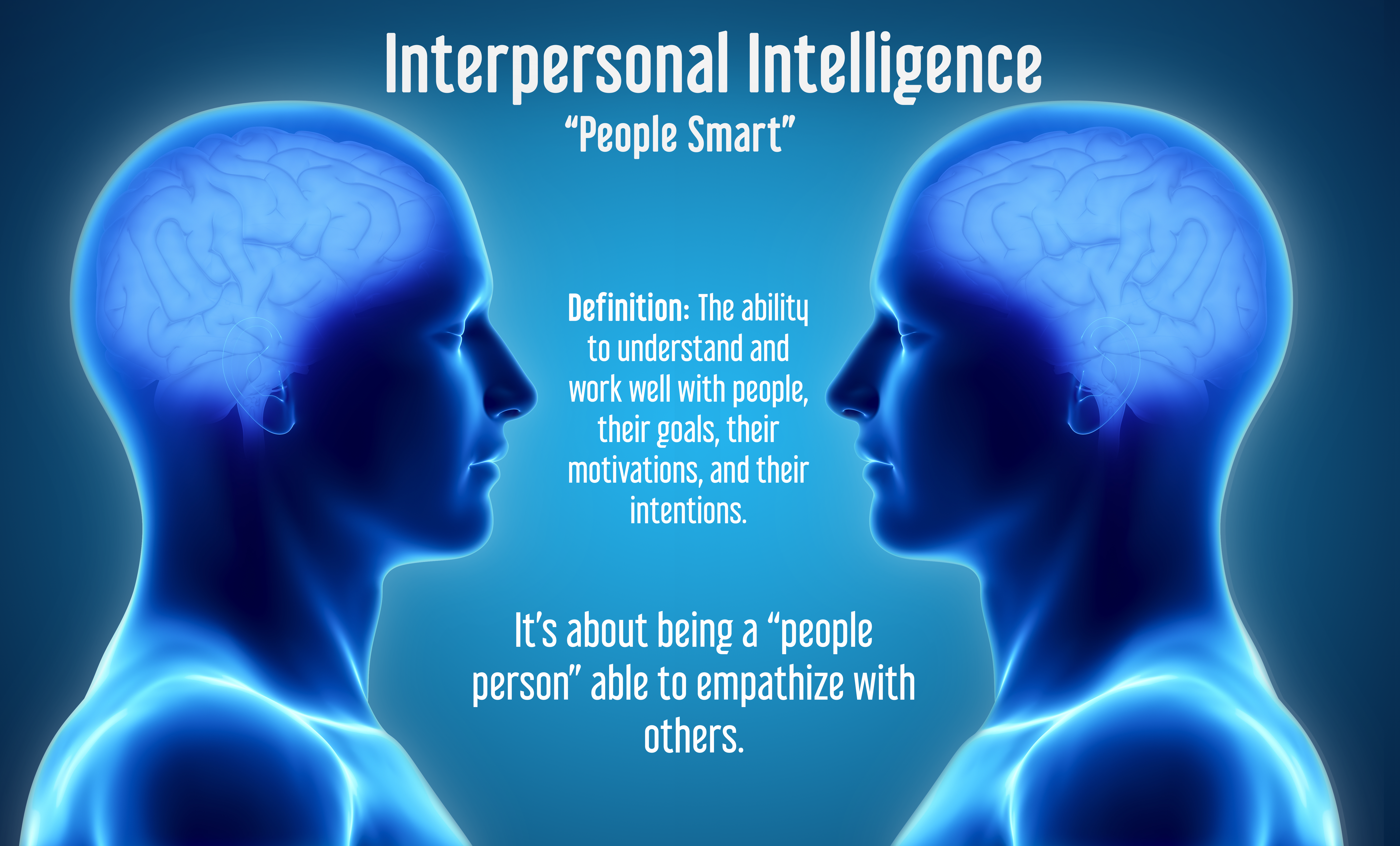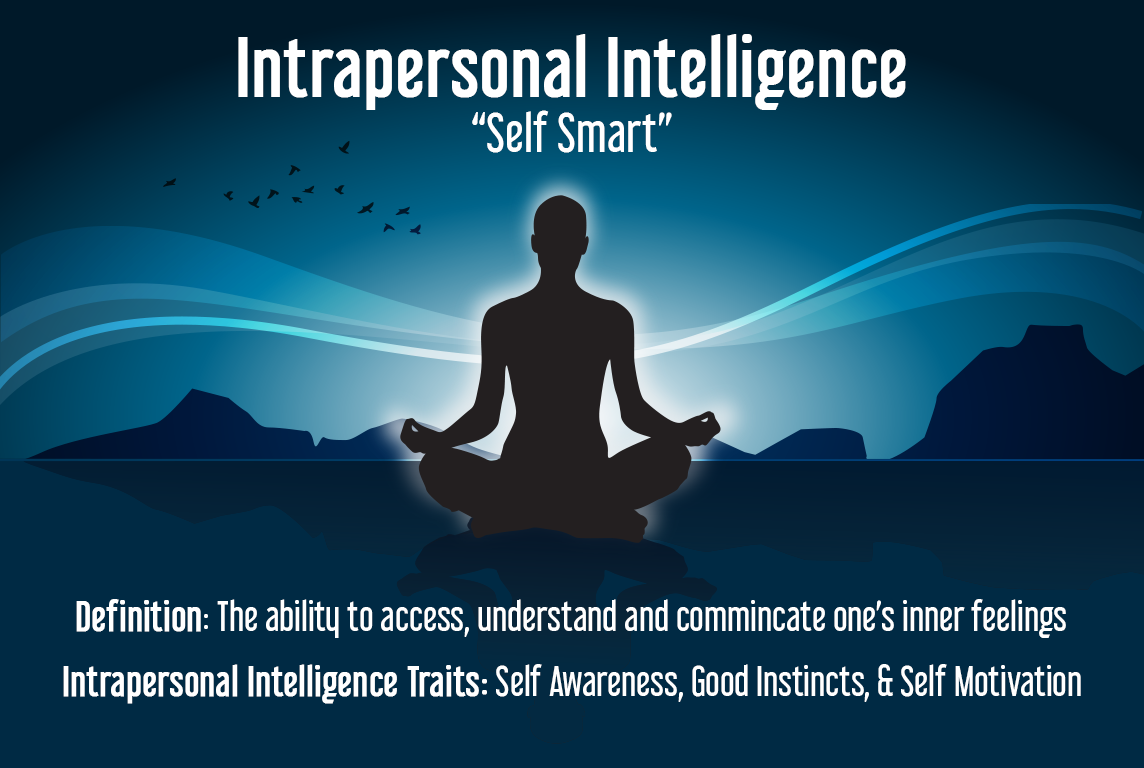Can You Think Like Leonardo Da Vinci?
Leonardo da Vinci was a true Renaissance man and had one of the most well developed brains on the planet. He was an accomplished scientist, mathematician, engineer, anatomist, painter, sculptor, inventor, botanist, musician, writer and botanist.
Acclaimed author, Michael Gelb, wrote the profound book called “How to Think Like Leonardo Da Vinci,” in which he discusses unique strategies that Da Vinci practiced in order to improve his skills and intelligence. Gelb discusses in this book how human beings are gifted with an almost unlimited potential for learning and creativity and uses Da Vinci as our genius guide to show us how to unlock our dormant potential.
Da Vinci used novelty and specific brain training techniques in order to enhance his brain and develop skills in a wide variety of areas. In particular, Da Vinci would focus on each of the intelligences explained in this booklet, which allowed his brain to develop in a profoundly versatile and fluent way, giving him remarkable abilities to excel in a wide variety of subjects.
The Seven Da Vincian Principles:
Da Vinci left these seven principles for thinking and experiencing life at a higher level (1). These are characteristics we can all continue to develop throughout our lives. As we pursue improvements in each of these, we get a glimpse into what it would be like to think like Leonardo Da Vinci?
Da Vinci made it a daily habit to practice these principles and they are reflected in the results he attained during his lifetime. The good news is that we can pattern ourselves in the same way and although we may never do what Da Vinci did, we can improve our overall performance in every area of our life.
Curiosity: An insatiably curious approach to life and an unrelenting quest for continuous learning.
Demonstration: A strong commitment to test your knowledge through hands-on experience, persisting through struggles and failures and a willingness to learn from mistakes.
Sensation: A never ending refinement of all of our senses, (taste, touch, smell, hearing and vision), especially sight as a way to experience life at a deeper level.
Smoke: Becoming open to all possibilities. This refers to a willingness to embrace ambiguity, paradox and uncertainty. This is a deeply vulnerable place but it also opens and expands our minds beyond the limitations we place upon ourselves.
Art and Science: This is whole brain thinking that develops a balance between logic and imagination, science and art. This is a balance between the right sided, creative brain and the left sided, logical brain.
The Body: The development of fitness, health, grace and poise. Balancing the brain and the body and enhancing the bodies characteristics to allow it to grasp more skills. This included developing a level of ambidexterity.
Connection: Seeing and appreciating the under woven interconnectedness of all things and phenomena. We call this today, “systems thinking.”
Theory of Multiple Intelligences:
Da Vinci and others believe that everyone on the planet has a high level of intelligence, but often it is in areas that aren’t easy to observe or are not tested in a typical business or academic setting. Here are the various categories of intelligence according to the theory of multiple intelligences developed by Howard Gardner in his book “Frames of Mind.” (2)
- Musical Intelligence: The ability to pick up harmony, beats and rhythm. Some people are so musically talented that they can pick up a new instrument and play well after only a few hours of training.
- Visual-Spatial: This is the ability to learn through visual perception and understand where we are in space (depth perception) and to be able to visualize with the mind’s eye.
- Verbal-Linguistic: This is the ability to use language effectively. These people pick up reading, writing and speaking more effectively than others.
- Logical-Mathematical: This is the left brained, logical, reasoning and critical thinking area. Lawyers, accountants, scientists all work this area of their brain intensely
- Bodily-Kinesthetic: This is the ability to control our bodily motions and the capacity to handle objects with skill. Individuals with great intelligence in this area are athletes, dancers, martial artists, etc.
- Interpersonal: Individuals who have high interpersonal intelligence are characterized by their sensitivity to others’ moods, feelings, temperaments and motivations, and their ability to cooperate in order to work as part of a group.
- Intrapersonal: This area has to do with introspective and self-reflective capacities. This refers to having a deep understanding of the self; what one’s strengths or weaknesses are, what makes one unique, being able to predict one’s own reactions or emotions.
- Naturalistic: This area has to do with nurturing and relating information to one’s natural surroundings. Gardeners, wilderness guides and individuals who work with animals and in nature tend to be strong in this area.
- Existentialist: The capability to see how something relates to the big picture. Philosophers, politicians, business leaders, pastors and religious authorities tend to be strong in this area.
The Hemispheres of the Brain:
Our brains are split into 2 hemispheres, a right side and a left side. The left side of the brain for most individuals is where the language centers are and it is involved with logical thinking, analysis and accuracy (3).
The right brain for most individuals is more abstract and focuses on visual understanding, aesthetics, feeling, emotions, creativity and imagination. In general, grade school tends to favor the use of the left brain while downplaying the right brain activities (4).
For a small percentage of people, roughly 10%, their language center is on the right side of the brain and the roles are reversed. The majority of these individuals are left handed (5). But for this booklet, we will focus on the 90%, but if you are left handed, just reverse the roles and think of your left brain as the creative side and the right brain as the logical side.
Left Brain Activities:
The left side of the brain processes language and mathematics. Using puzzles and games will help to sharpen this hemisphere. As you try to solve a word puzzle or play a game like monopoly or charades, the left hemisphere ramps up activity trying to help you succeed. Logic oriented brain teasers and mathematical word problems are fantastic exercises for the left side of the brain.
Left Brain Exercises:
Keep a daily journal of your activities
Write for a blog/website or start writing your own book
Write for a magazine or newspaper
Leave meaningful comments on other blogs
Try to learn a new language
Read a book
Listen to lyrical music and try to remember and sing the lyrics
Right Brain Activities:
The right brain is where the emotions, intuition and visualization centers are. We improve this part of our brain by exploring our creativity in these areas. The more we can do creative activities, the more we stimulate the right brain.
Right Brain Exercises:
Observing or creating art work
Mentally visualizing
Listening to non-lyrical music such as classical or meditative music
Making food with a variety of different colors and smells
Watching a creative movie
Doing anything creatively and imaginatively
Connecting Both Hemispheres:
There are a number of ways you can do things to activate both sides of the brain and have them work together. Da Vinci was constantly doing with with his daily rituals. This is a great idea, so you have more balance in your brain, which allowed Da Vinci the mental flexibility to link seemingly unrelated things together to form new meanings and new creations in his mind.
We know that writing, analysis and drilling down skills is a left brain activity and that visual input, creativity and imagination are right brain activities.
Unique Writing Patterns:
Study and change up your writing patterns. Write any word by hand and look at the shapes of the letters. The act of writing the word is a left brain activity.
Next, write the word while looking at something on the wall in front of you or look at yourself in the mirror. Next, write the word upside down or in reverse. This challenges your ability to visualize which is primarily a right brain activity.
Hemispheric Conversations:
You can link your hemispheres by taking pencil or pen with your right hand and writing any short phrase or sentence. Then switch hands and write a statement in reply to this. Keep switching hands until you write a paragraph or a page.
Don’t worry about neatness…this is just for you and it will help stimulate creativity. You will notice unique personalities come out as you switch hands. The left brain will help you assess your feelings and offer logical solutions to various problems and help you remember forgotten facts that were stored in your subconscious mind.
Meanwhile, your right brain will be activated when you use your left hand to write and will help stimulate your intuition and inspiration behind what you are writing. This will help you develop new and improved solutions that you may have never thought about before.
Move Differently:
We all have set ways that we move our body and these are hardwired into our nervous system. Moving in pre-programed ways or moving in such ways that we have drilled into our physiology such as a specific dance or playing catch, etc. is primarily a left brain activity.
Moving in a new and unique way requires more imagination and right brain activity. Learning new dance steps or a new exercise are great ways to activate the right brain. Here are some other ways:
Try a new sporting activity
Take a new dance class
Try balancing on one leg
Writing or using a utensil with your non-dominant hand
Walking down your hallway with your eyes closed
Feel the texture of different objects like rocks, shells, etc.
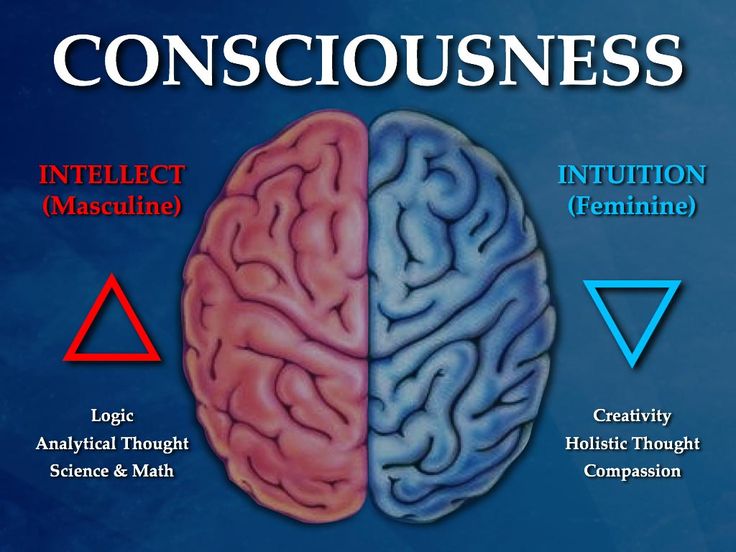
Improving Your Intelligences:
Here are some daily or weekly exercises you can do to improve various areas of your life in relation to the theory of multiple intelligences.
In each category, I give you some right brain and left brain examples and what we call a Power Neurobic, which links both sides together.
Some of these areas are easier to understand train than others. A great practice would be to first balance out our strengths and then train up our weaknesses. Many of these exercises are simple and can be done in a minute.
Musical Intelligence:
This has to do with the ability to pick up harmony, beats and rhythm.
Right Brain: Listen to classical or meditative music without word lyrics and/or play an instrument
Left Brain: Listen to lyrical music or sing or hum a song
Power Neurobic: Learn a new instrument or how to sing a new song
Training and improving your musical intelligence helps us to understand rhythms and beats and can provide more harmony and happiness in one’s life.
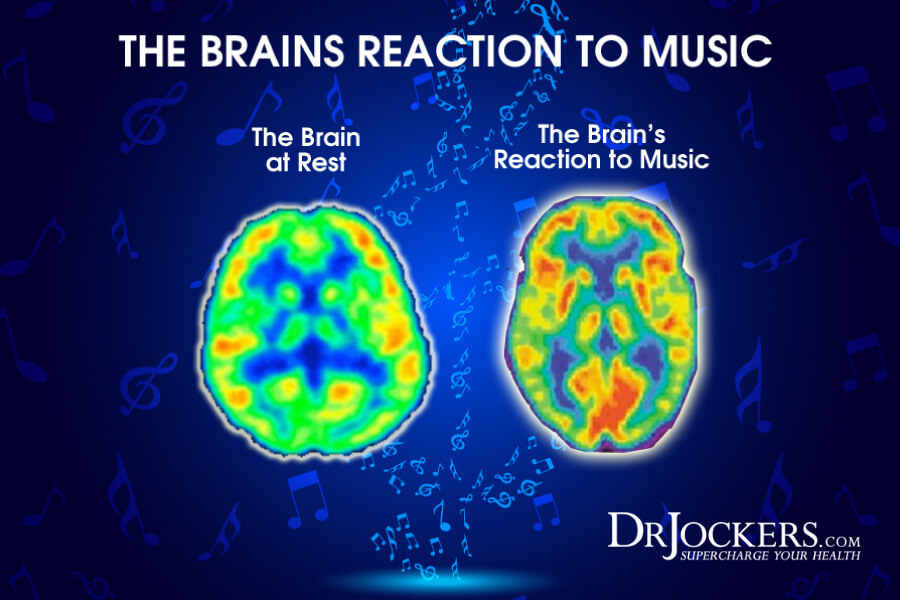
Visual-Spatial Intelligence:
Visual intelligence tends to be more of a right brain activity but if you add in an analytical quality to it, it will tie in more of the left brain.
Right Brain: Visualize activities that will take place throughout the day or be creative and allow your mind to visualize random activities.
Observe artwork and make food with a variety of different colors
Play a game of checkers or chess where you have to visualize moves ahead of time
Left Brain: Do mathematical calculations in your mind or memorize a speech, quote or phrase. Study a map so you can see where in relation different landmarks are and plan out how you are going to get from point A to point B.
Power Neurobic: Eat foods with lots of colors or look at a unique piece of art to stimulate your visual senses and discuss with a friend or journal on your own what the colors reminded you of from your past.
Training and improving your spatial intelligence can help improve many areas of your brain including memory, cognitive ability and thinking. People who can visualize solutions or patterns to solving a problem have a distinct edge over people who have to have everything laid out before they can try to find a solution.
Verbal-Linguistic Intelligence:
Verbal-linguistic activity is more of a left brain activity, but if you add in more imaginative thought than you will enhance right brain activity.
Right Brain: Journal about a place you want to travel too, an activity you want to experience or write out a fictional story. You can also read a story book. Remember, the more imagination you use, the more of your right brain you will activate.
Left Brain: Memorize a speech or a quote and say it out loud to yourself or in a performance. Read an educational book and try to memorize and recite back facts and details that you learned. Plan out a strategic action plan for your day.
Power Neurobic: Play a game with a friend where you each tell a story one sentence at a time. So you come up with the first sentence and then your friend comes up with the second sentence. Try to be real creative and imaginative with this. It is a lot of fun and powerfully stimulates both sides of the brain.
Training up your verbal linguistic intelligence is one of the best ways to succeed, and will quickly put you in leadership positions in life as you will be able to communicate with intelligence, imagination and confidence.
Mathematical – Logical:
Right Brain: Play a card game which depends upon your brain doing mental math in an unpredictable way.
Left Brain: Work on your financial budget or balance your checkbook.
Power Neurobic: Create a number sequence using multiples and recite it forwards and backwards and link each number to something meaningful in your life.
1 –represents my one life partner 4- represents my 4 siblings 7 – represents 7 days in the week. 10 – represents the 10 commandments 13 – represents Friday the 13th…etc.
Individuals with mathematical-logical intelligence are great engineers, accountants, physicists, mathematicians, investment bankers and lawyers. These individuals are responsible for the technology that allows us to travel, use technology and manage our finances.
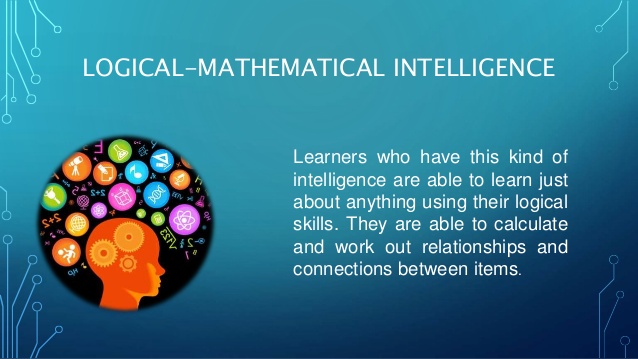
Bodily – Kinesthetic:
This includes doing all kinds of motions with your body including playing sports, dancing and even playing charades.
Right Brain: Think about using your body in creative and imaginative ways. Playing charades, free style dancing, acting, trying a new food or taking time to fully appreciate all the flavors in a specific meal you are consuming.
Left Brain: Do drills on a specific sports skill like hitting a golf ball or a baseball off of a tee. Playing catch or fielding ground balls. Dribbling or shooting a basketball. Practicing a martial arts move or a specific dance move.
Power Neurobic: Play a sports game. Sports require left brain analytical thought and specific drills you may have practiced, but they also require creative and imaginative thought and the ability to respond creatively to various activities in the game.
Another simple idea would be to do some sort of drill activity with your non-dominant hand as this would activate both sides of the brain. It could be bouncing and catching a tennis ball or combing your hair.
Bodily -Kinesthetic individuals are great athletes, circus performers and dancers. Their skills help provide one of the favorite forms of entertainment for our society with sporting events and human feats of awe.
Interpersonal Intelligence:
This has to do with how we relate and communicate with others and their feelings, emotions and values.
Right Brain: Listen to someone tell a story or explain their circumstances and try to visualize what they are saying in your brain and feel their emotions. This will enhance right brain activity and cultivate empathy and interconnectedness.
Left Brain: Socialize and talk with others. The act of talking and listening is left brain.
Power Neurobic: Have deep conversation with people, where you take time to actively listen and are aware of their word choice and emotions around the circumstance while visualizing in your mind what they are talking about. Then repeat back to them what they said with the words they used while feeling the emotions and seeing the circumstances.
This power neurobic will not only enhance our brain but will deepen our relationships!
Interpersonally intelligent individuals have developed the ability to have deep and intimate relationships with the people in their lives. They are respected and loved deeply by the people in their lives due to their ability to connect on an intimate level.
Intrapersonal Intelligence:
This has to do with how well you know yourself, your own values, beliefs, feelings and attitudes. The philosopher Socrates said, “First, know thyself,” and was referring to developing intrapersonal intelligence. Da Vinci was also very big on this form of intelligence.
Right Brain: Visualize in your mind where you want your life to go and what you want your future to look like and to feel like. Visualize past experiences and they have imprinted upon your values, beliefs and feelings.
Left Brain: Create a personal development plan that you physically plan and write out on paper with different skills you want to learn to enhance certain strengths and weaknesses.
Power Neurobic: Journal about your experiences from the day discussing concepts and how they relate to your values, beliefs and feelings.
Give yourself a pep talk, using descriptive words to define and uplift you while visualizing what these words mean to your past, present and future.
Intrapersonally intelligent individuals know themselves well and typically have a strongly defined path in life because of this. These individuals are great at examining where they need to improve in areas of their life and continually make small adjustments to improve their character, life skills and relationships.
Naturalistic:
The naturalistic intelligence is typically more right brained, because it is very intuitive and visual. However, if you are planning out a garden or building a fire, etc. than there is an analytical component that brings in the left brain.
Right Brain Activity: Go for a hike, a bike ride or a run on a nature trail. Have a picnic outdoors, relax and sunbathe or swim in the ocean. You can also take time to smell all the plants and flowers. The act of taking in the smells and fully experiencing them is a right brain activity.
Left Brain Activity: Do something outdoors that takes planning and analysis. This could be mowing the lawn, gardening or building a tree house.
Power Neurobic: Go to a new place outdoors that is full of fresh sights, smells and sounds and read a good book or write in your journal about what you are smelling, seeing and hearing.
Individuals who are naturalistically intelligent are great outdoors people, fantastic with animals and are very self-reliant in that they can grow their own food and navigate the wild effectively. They often display a level of peace that comes with spending a lot of time in nature.

Existential Intelligence:
This is a deep philosophical and often spiritual outlook on life that looks at what the happenings in life mean to the world as a whole.
Right Brain: Consider in your mind thoughts such as the following:
What is the meaning of life? How did we get here to begin with and why do we die?
What did I learn today and how does that fit into the world as a whole.
Try to look at circumstances such as politics, religion, disagreements from multiple points of view. See all sides and perspectives of a circumstance.
Left Brain: Journal and physically write and put into words the deep questions above.
Power Neurobic: Pick a random quote, scripture or perspective on life you haven’t considered in the past and write about it. Try to view the topic from every possible angle, based on how someone would perceive it who grew up in an entirely different culture and background, etc.
Existentialists are great leaders because they can see the big picture of life. They often set the direction for various industries, make great politicians and spiritual leaders.
Conclusion:
While Da Vinci was an incredibly gifted man, he also had a strategy that enhanced his senses and we can learn from this and apply the Da Vinci principles to our own life. Da Vinci and many of his followers throughout the ages have made it a daily ritual to train their brain for high performance until they day they day.
We can all continue to improve our intelligences in all of these areas throughout our lives. These tips are practical strategies to boost your brain power and overall intelligence.
If you want to work with a functional health coach, I recommend this article with tips on how to find a great coach. We do offer long-distance functional health coaching programs. For further support with your health goals, just reach out and our fantastic coaches are here to support your journey.

